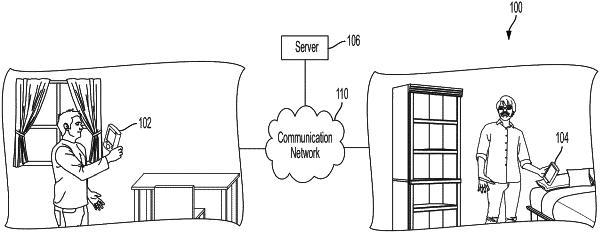| CPC G06T 19/006 (2013.01) [G02B 27/017 (2013.01); G06F 3/011 (2013.01); G06F 3/017 (2013.01); G06F 3/04815 (2013.01); G06V 20/20 (2022.01); G02B 2027/014 (2013.01); G02B 2027/0138 (2013.01)] | 22 Claims |

|
1. A method, comprising:
using a first computing device to perform:
obtaining an image of a scene captured using a camera coupled to the first computing device;
obtaining camera setting values used by the camera to capture the image;
determining, using the image, surface attribute values characterizing at least one surface shown in the image of the scene, the at least one surface including a first surface on which a first virtual object can be placed, the surface attribute values including first surface attribute values for the first surface;
generating an augmented reality (AR) interface at least in part by using the camera setting values and the surface attribute values to create a first composite image by overlaying the first virtual object onto the image so that the first virtual object is displayed in the AR interface as being on the first surface of the at least one surface shown in the image of the scene;
transmitting, to a second computing device and via at least one communication network, the first composite image, the camera setting values and the surface attribute values;
receiving, from the second computing device, at least one second composite image obtained by changing the first composite image by a second user, wherein changing the first composite image comprises adding a second virtual object to the first composite image, removing the first virtual object from the first composite image, changing a position and/or orientation of the first virtual object in the first composite image, and/or changing a visual characteristic of the first virtual object in the first composite image; and
generating a first graphical user interface (GUI) using the at least one second composite image, the camera setting values, and the surface attribute values.
|